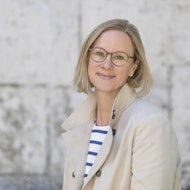The Ages of German Art: Romanesque - Online Study Day
With the rise of the Carolingian dynasty during the 8th-century, Germany saw her first significant art production since the disintegration of the Roman Empire. Architectural masterpieces like Charlemagne’s Palace Chapel in Aachen or the exquisite works of Carolingian book illuminations and goldsmith works are named “pre-Romanesque” in German art history. What art historians call “Romanesque” art in Germany only begins in the course of the 10th-century with outstanding examples of Ottonian art. This study day – the first of a series that will take us all the way into the time of around 1800 – opens up the visually stunning world of the early Middle Ages. We will study the architecture of churches and abbeys as well as expressive sculpture, colourful manuscripts and glittering goldsmith work.
Your Tour Includes
- 3 online lectures on The Ages of German Art - The Baroque
Itinerary
Please choose your preferred 1 day itinerary
10.00-11.30
12.00-13.30
14.30–16.00


